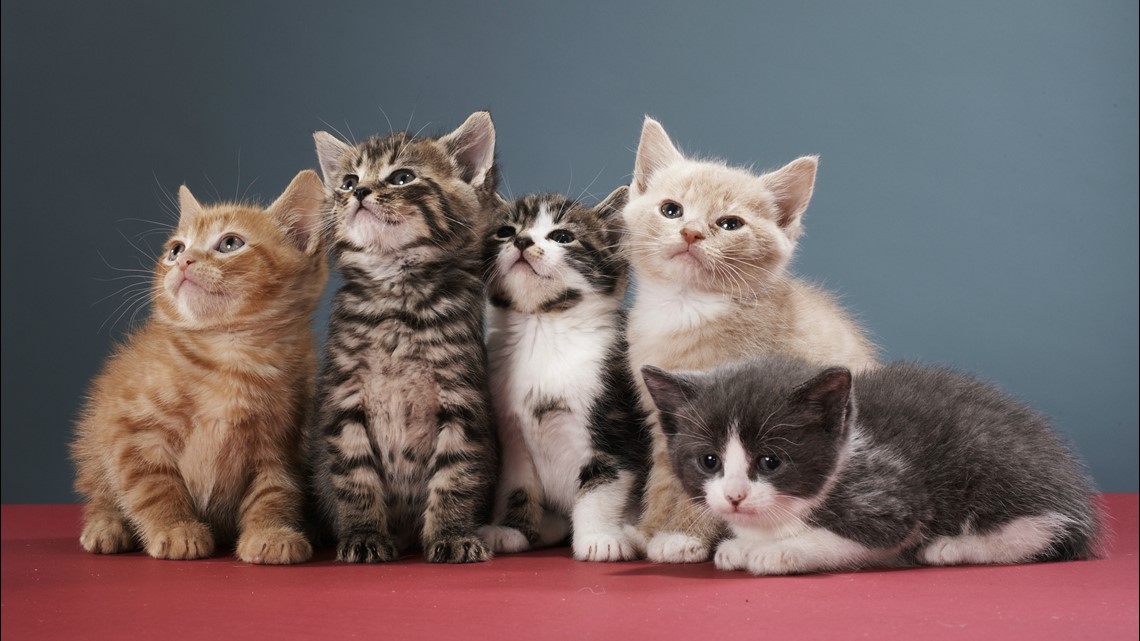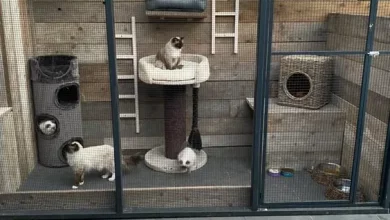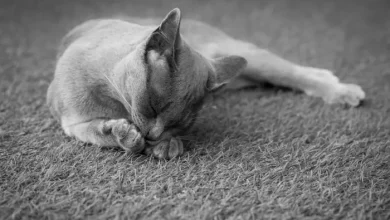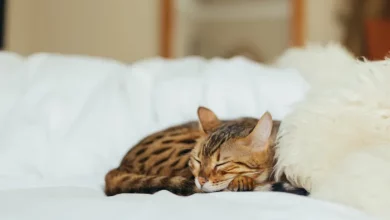Cuddle up with your furry friend: The joys of owning a cat
Are you looking for a loyal and affectionate companion? Look no further than a feline friend! Owning a cat can bring endless joy and comfort to your life. Not only are cats known for their playful and curious nature, but they also become a part of your family and create a special bond with their owners.

From snuggles on the couch to playtime with their favorite toys, cats provide endless opportunities for quality time with their owners. But did you know that owning a cat can also have mental and physical health benefits? Studies have shown that cat therapy can provide stress and anxiety relief, while their playful energy can provide opportunities for exercise and improve hand-eye coordination.
In this article, we’ll explore all the different joys and benefits of cat ownership. From their affectionate cuddles to their amusing antics, we’ll cover everything you need to know about welcoming a feline friend into your home.
The bond between owner and cat
Cats are not just pets, they are companions that become part of your family. The bond between owner and cat is a special one, built on loyalty, trust, and affection. Unlike dogs, who are known to be loyal to their owners, cats are often viewed as independent creatures. However, this is a misconception. Cats form strong attachments to their owners and can be just as loyal as dogs.
One of the reasons why cats form such strong bonds with their owners is because they are highly social creatures. In the wild, cats live in groups and form close relationships with other cats. This social behavior carries over into their domestic lives, where they develop close relationships with their owners.
One study found that cats show attachment to their owners in a similar way to infants showing attachment to their parents. When a cat and their owner were separated in the study, the cats showed signs of distress and anxiety, including vocalizations and increased grooming behaviors, upon the owner’s return, the cats showed signs of relief and contentment.
As a cat owner, you will also notice that your cat will seek out your company and affection. They will often follow you around the house, sit on your lap, and even sleep with you at night. This behavior is a sign of their attachment to you and their desire for your attention and affection.
The benefits of owning a cat
The bond between owner and cat is not only beneficial for the cat but also for the owner. Cat ownership has been shown to have a positive impact on mental health, including reducing stress and anxiety levels. Studies have found that owning a cat can lower blood pressure, decrease anxiety and depression, and improve overall mood and well-being.
Furthermore, cats are great companions for individuals who may not have a lot of social interactions. They provide comfort, warmth, and affection, which can help ease feelings of loneliness and isolation.
Cats also have physical health benefits for their owners. They can help lower the risk of heart disease and stroke and provide opportunities for exercise and outdoor activities.
The bond between owner and cat is a special one that can bring joy, comfort, and companionship into your life. It’s no wonder they say that cats have nine lives- they truly enrich ours in countless ways.

Benefits of cat ownership for mental health
It’s no secret that owning a cat can bring immense joy and comfort to your life. But did you know that cats can also have a positive impact on your mental health?
Studies have shown that spending time with cats can help reduce stress and anxiety levels. Simply petting a cat can release feel-good hormones like oxytocin and serotonin, which can help improve your mood and overall sense of well-being. In fact, some therapists even use “cat therapy” as a form of treatment for individuals with mental health issues.
Beyond providing emotional support, cats also offer companionship and a sense of purpose. Taking care of another living being can give you a sense of responsibility and help combat feelings of loneliness or isolation. And with their playful antics and affectionate nature, cats can provide endless entertainment and laughter.
Whether you’re dealing with mental health challenges or simply looking to improve your overall well-being, owning a cat can be a valuable and rewarding experience.

Physical health benefits of owning a cat
Cats are often associated with lounging around, but they can actually provide numerous opportunities for physical activity and exercise.
Playing with your cat can be a great way to get some exercise and improve your physical health. Chasing toys and engaging in playtime can help improve your hand-eye coordination and reflexes. Plus, the physical activity can be a great stress reliever.
Additionally, owning a cat can encourage you to be more active in general. Regularly cleaning their litter box or providing outdoor time can help you stay on your feet and moving around.
One study found that owning a cat can even lower your risk of heart attack and stroke. The study followed over 4,000 participants for 10 years and found that cat owners had a 30% lower risk of death from a heart attack or stroke compared to non-cat owners.
Overall, owning a cat can provide multiple opportunities for physical activity and contribute to a healthier lifestyle.

The joys of cat cuddles
There is nothing quite like cuddling up with your furry feline friend after a long day. Cats are known for their affectionate nature, and the comfort they provide is unparalleled. Whether they are cuddling on your lap or snuggling up next to you in bed, the warmth they provide is a source of relaxation and joy.
One of the reasons cats make such great companions is their natural inclination to show affection. They often knead with their paws, rub their faces against yours, or even lick your skin as a sign of affection. These gestures can provide a sense of calm and happiness, especially during times of stress or anxiety.
Studies have shown that petting a cat can lower blood pressure and reduce stress, making cat cuddles not just enjoyable, but beneficial for your health as well. It’s no wonder that cat therapy has become popular in recent years, with therapy cats visiting hospitals and retirement homes to provide comfort and companionship to those in need.

And let’s not forget the undeniable cuteness factor of cat cuddles. There’s something about a purring ball of fur snuggled up next to you that just makes your heart melt. It’s a reminder of the simple pleasures in life and the joy that comes from the company of a beloved pet.
So take some time today to cuddle up with your furry friend and enjoy the warmth, comfort, and joy they bring to your life.
The fun of playing with your cat
Engaging in playtime with your feline friend not only provides entertainment for both you and your cat but can also have multiple benefits.
Cats are natural hunters and have a strong predatory instinct, so playing with them can help satisfy their natural needs and desires. Providing your cat with toys that stimulate their hunting instincts, such as small mice or feather toys, can help keep them mentally and physically stimulated.
Playtime also helps reduce stress and anxiety for both you and your cat. It can be a great way to bond and deepen your relationship with your feline companion. Regular play also helps prevent destructive behavior in cats, such as scratching or biting, by providing an outlet for their pent-up energy.
When playing with your cat, it’s important to remember to never use your hands or feet as toys, as this can encourage biting and scratching. Instead, use toys specifically designed for cats and be sure to provide a variety of options to keep your cat engaged and interested.
Choose toys that are safe for your cat, with no small parts that can be swallowed or strings that can be a choking hazard. Supervise your cat during playtime to prevent any accidents or injuries.
Playing with your cat can also improve your own reflexes and hand-eye coordination. It’s a fun and playful way to incorporate exercise into your daily routine, as well as your cat’s.
So, whether it’s a game of chase with a feather toy or a friendly game of hide-and-seek, make sure to set aside some time each day for playtime with your feline friend.

The joy of watching your cat
One of the many pleasures of owning a cat is simply watching them. Their unpredictable and amusing behavior never fails to entertain and bring joy to their owners. From their silly antics to their graceful movements, there are countless reasons why watching your cat is so enjoyable.
Whether your cat is napping in a sunbeam or stalking a toy mouse, their movements and expressions are fascinating to observe. These moments of quiet observation can deepen your understanding and connection with your feline companion.
Watching your cat can also be a helpful way to monitor their health and behavior. By keeping an eye on their eating, drinking, and litter box habits, you can detect any changes that may indicate a health issue. Additionally, observing their interactions with other cats or animals can give you insight into their social behavior and help you address any potential problems.

“Watching my cat always brightens my day. Whether she’s batting at a toy or just lounging on the windowsill, she brings so much joy to my life.”
The importance of cat grooming
Cat grooming is an essential part of caring for your feline friend. Regular grooming not only helps your cat look and feel their best, but it also promotes good health and hygiene. Grooming your cat can also be a bonding experience, as it allows you to spend quality time with your pet. Here are some important grooming practices to keep in mind:
| Grooming Practice | Description |
|---|---|
| Brushing your cat’s fur | Regular brushing can prevent matting, minimize shedding, and distribute your cat’s natural oils. |
| Cleaning your cat’s ears | Avoid using Q-tips and instead use a damp cloth to gently clean their ears. Check for any signs of infection, such as discharge or a foul odor. |
| Trimming your cat’s nails | Regular nail trims can prevent your cat from scratching furniture and people. Use special cat nail clippers and be careful not to cut the quick (the area that contains blood vessels and nerves). |
| Bathing your cat | Your cat may not need to be bathed frequently, but if they do, use a cat-specific shampoo and avoid getting water and soap in their ears, eyes, and nose. |
It’s important to note that some cats may not enjoy being groomed and may require patience and positive reinforcement. Consider offering treats or praise during grooming sessions, and if your cat becomes stressed or aggressive, consult with a professional cat groomer or veterinarian for help.
Regular grooming not only keeps your cat looking and smelling good, but it can also help detect any health issues early on. For example, while brushing your cat’s fur, you may notice any lumps, bumps, or skin irritations that may need further examination by a veterinarian.
By taking the time to groom your cat, you can ensure that they are healthy, happy, and comfortable. Plus, who doesn’t enjoy a good snuggle with a freshly groomed kitty?

The joys of cat training
Training your cat can be a rewarding experience for both you and your feline companion. Not only does it improve their behavior, but it also deepens your connection with them. Here are some tips for successful cat training:
Use positive reinforcement
Instead of punishing your cat for bad behavior, focus on rewarding them for good behavior. This can include treats, toys, and verbal praise. Cats respond well to positive reinforcement and are more likely to repeat good behavior when rewarded for it.
Start with simple commands
When beginning cat training, start with simple commands such as “sit” or “come.” Once your cat has mastered these commands, you can move on to more complex behaviors.
| Command | Description |
|---|---|
| Sit | Teach your cat to sit on command by holding a treat above their head and saying “sit.” When they sit, reward them with the treat. |
| Come | Teach your cat to come to you on command by calling their name and saying “come.” Reward them with a treat or toy when they come to you. |
| Stay | Teach your cat to stay in one spot by saying “stay” and holding your hand out in front of them. Reward them with a treat when they stay in place. |
Be patient
Cat training takes time and patience. Don’t expect your cat to learn everything overnight. Be consistent with your training and reward good behavior consistently to reinforce it.
Avoid punishment
Punishing your cat can be counterproductive and damage the bond between you and your cat. Avoid physical punishment or yelling, as this can cause your cat to become fearful and stressed.

Cat training can be a fun and rewarding experience. With patience and positive reinforcement, you can teach your cat new behaviors and strengthen your bond with them.
Caring for your cat’s health
As a responsible cat owner, it is essential to prioritize your cat’s health and well-being. Regular veterinary check-ups are crucial in maintaining your cat’s health. It is recommended that cats receive at least one wellness check-up per year. During these visits, veterinarians will check your cat’s overall health, including their weight, dental health, and any potential health issues.
In addition to regular vet visits, it is essential to monitor your cat’s behavior and mood for any signs of illness. Common signs of illness include loss of appetite, lethargy, and changes in litter box behavior. If you notice any of these signs, it is important to take your cat to the vet as soon as possible.
Another way to care for your cat’s health is by providing them with proper nutrition. Cats are carnivorous animals and require a diet high in protein. It is important to select a high-quality cat food that meets their nutritional needs. Avoid giving your cat table scraps, as this can upset their stomach and lead to obesity.
Additionally, it is important to keep your cat up-to-date on their vaccinations. Vaccinations protect your cat from common and potentially fatal diseases such as feline leukemia, rabies, and distemper.
Finally, if your cat requires medication, it is important to follow the veterinarian’s instructions carefully. This includes administering the medication at the correct time and dosage. Always consult with your vet before giving your cat any new medication or supplement.

The benefits of having multiple cats
While owning a single cat can bring joy and companionship into your life, having multiple cats can provide even more benefits. Here are a few reasons why:
| Benefits of having multiple cats | Description |
|---|---|
| Cat companionship | Multiple cats can provide companionship for each other, especially when their owners are not at home. |
| Cat socialization | Having multiple cats can help with socialization, as cats can learn from and play with each other. |
| Reduced boredom | Multiple cats can keep each other entertained and engaged, reducing boredom and destructive behavior. |
It’s important to note that introducing a new cat into your home should be done carefully and gradually, to ensure that all cats feel safe and comfortable. Providing separate food and water bowls, litter boxes, and resting areas can help prevent conflicts, and it’s important to monitor their interactions for any signs of aggression or discomfort.

In general, having multiple cats can enrich your life and add even more joy to cat ownership. However, it’s important to ensure that you have the time, space, and resources to provide for all of your feline companions.
The benefits of cat ownership in different living situations
When it comes to owning a cat, there are different living situations to consider. Whether you live in an apartment, a house, or a city, there are ways to provide a safe and comfortable environment for your feline companion.
Cat ownership in apartments
Living in an apartment doesn’t mean you can’t have a cat. In fact, cats can thrive in smaller spaces as long as they have enough room to move around and play. However, it’s important to make sure your apartment is cat-friendly. This means securing any potential hazards, such as open windows or balconies, and providing vertical spaces for your cat to climb and play. Consider getting a cat tree or a window perch.
Another important aspect of apartment living with a cat is litter box placement. Make sure to keep the litter box in an easy-to-access and private location, away from your cat’s food and water bowls.
Cat ownership in houses
If you live in a house, your cat will have more space to explore and play. However, it’s important to make sure your cat is safe both indoors and outdoors. Make sure to cat-proof your house by securing any potential hazards, such as toxic plants and loose electrical cords. Consider setting up a safe outdoor space for your cat to play in, such as a screened-in porch or a fenced-in yard.
Another important aspect of house living with a cat is providing enough stimulation and playtime. Cats need mental and physical stimulation to stay healthy and happy. Make sure to provide plenty of toys and playtime with your cat.
Cat ownership in cities
Living in a city can provide its own unique set of challenges and opportunities for cat ownership. One important aspect is providing a safe and secure living space for your cat. Make sure your windows and balcony are secure and your cat cannot escape. Consider microchipping your cat and keeping identification on them in case they do get lost.
Another important aspect of city living with a cat is providing enough mental and physical stimulation. Cats need exercise and playtime to stay healthy and happy. Consider setting up indoor playtime with your cat, and take them on supervised outdoor walks.

Overall, no matter where you live, owning a cat can bring joy and companionship to your life. By providing a safe and stimulating environment for your feline friend, you can ensure a happy and healthy life for both you and your cat.
FAQ about owning a cat
Q: How do I choose the right breed of cat?
A: Choosing the right breed of cat depends on several factors, such as your lifestyle, personality, and living situation. Research different breeds and consider their characteristics, temperament, and grooming needs. Some breeds are more active and require more attention, while others are more independent. It’s important to choose a breed that fits your lifestyle and personality.
Q: How do I litter train my cat?
A: Litter training a cat involves providing them with a litter box and teaching them to use it. Choose a litter box that is the appropriate size for your cat and place it in a quiet and accessible location. Encourage your cat to use the litter box by placing them in it after meals or when they show signs of needing to eliminate. If your cat has accidents outside of the litter box, clean the area thoroughly and consider consulting with a veterinarian to rule out any medical issues.
Q: How do I deal with behavioral issues in my cat?
A: Behavioral issues in cats can be caused by a variety of factors, including stress, boredom, or medical issues. Observe your cat’s behavior and identify any triggers for their unwanted behavior. Consult with a veterinarian to rule out any medical issues and consider consulting with a professional cat behaviorist if necessary. Provide your cat with plenty of mental and physical stimulation, such as toys and playtime, to prevent boredom and reduce stress.
Q: How do I introduce a new cat to my household?
A: Introducing a new cat to your household should be done slowly and carefully. Keep the new cat in a separate room with their own litter box, food, and water for a few days to allow them to adjust to their new environment. Swap scents by rubbing a towel on each cat and placing it in the other cat’s area. Introduce the cats gradually by allowing them to smell each other through a crack in the door and supervised visits. Be patient and monitor their interactions carefully to ensure a smooth integration.





